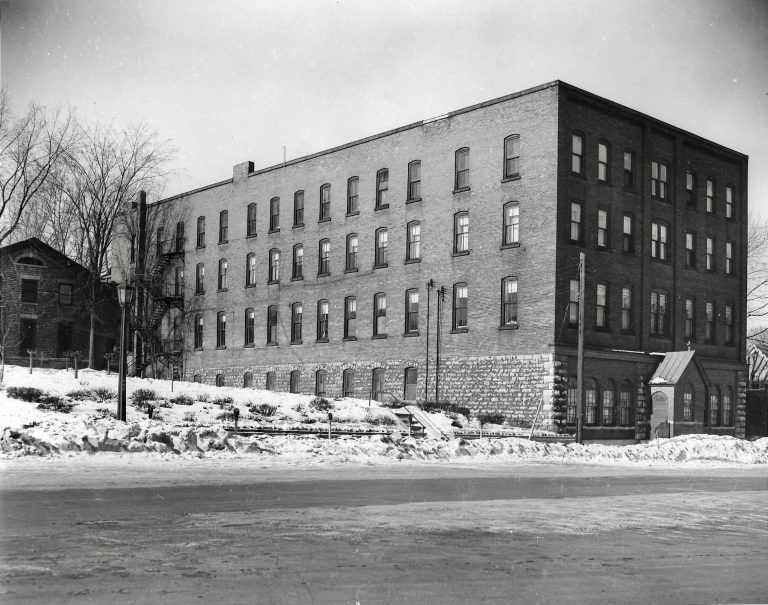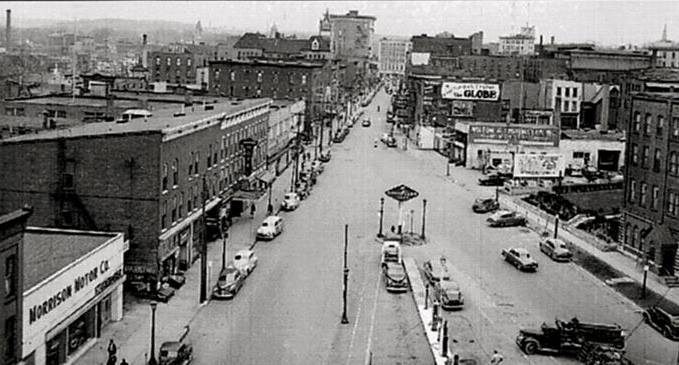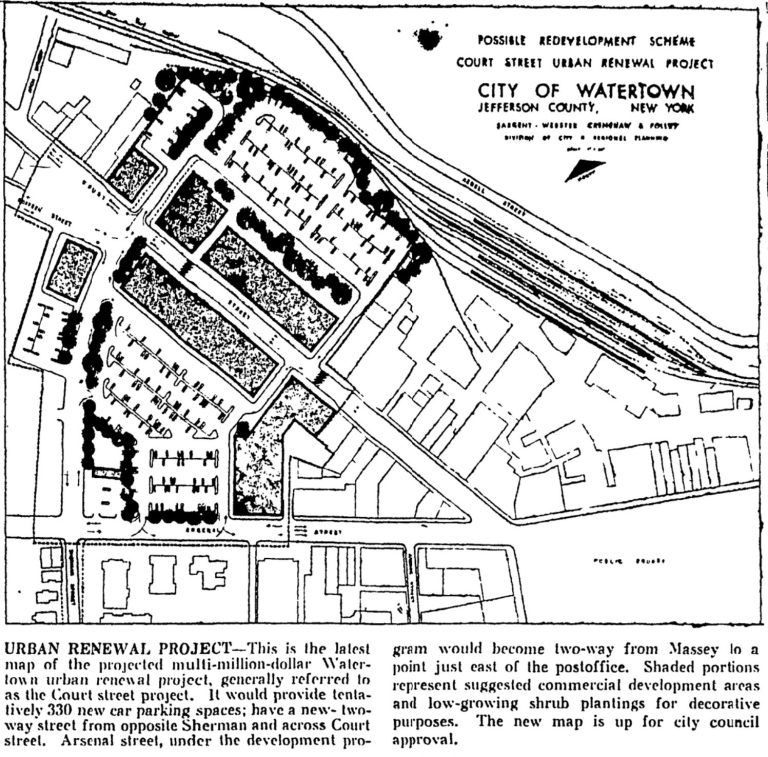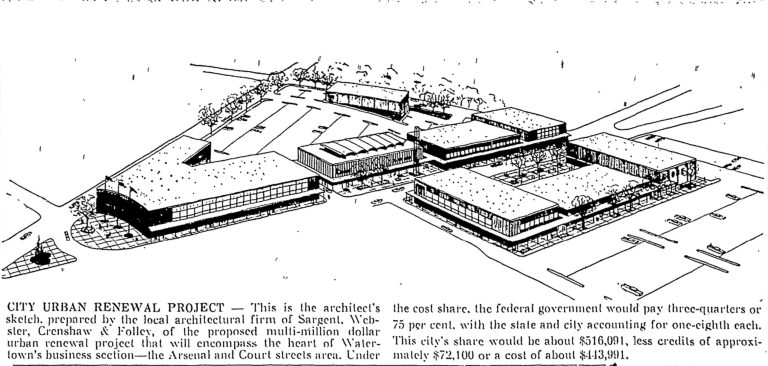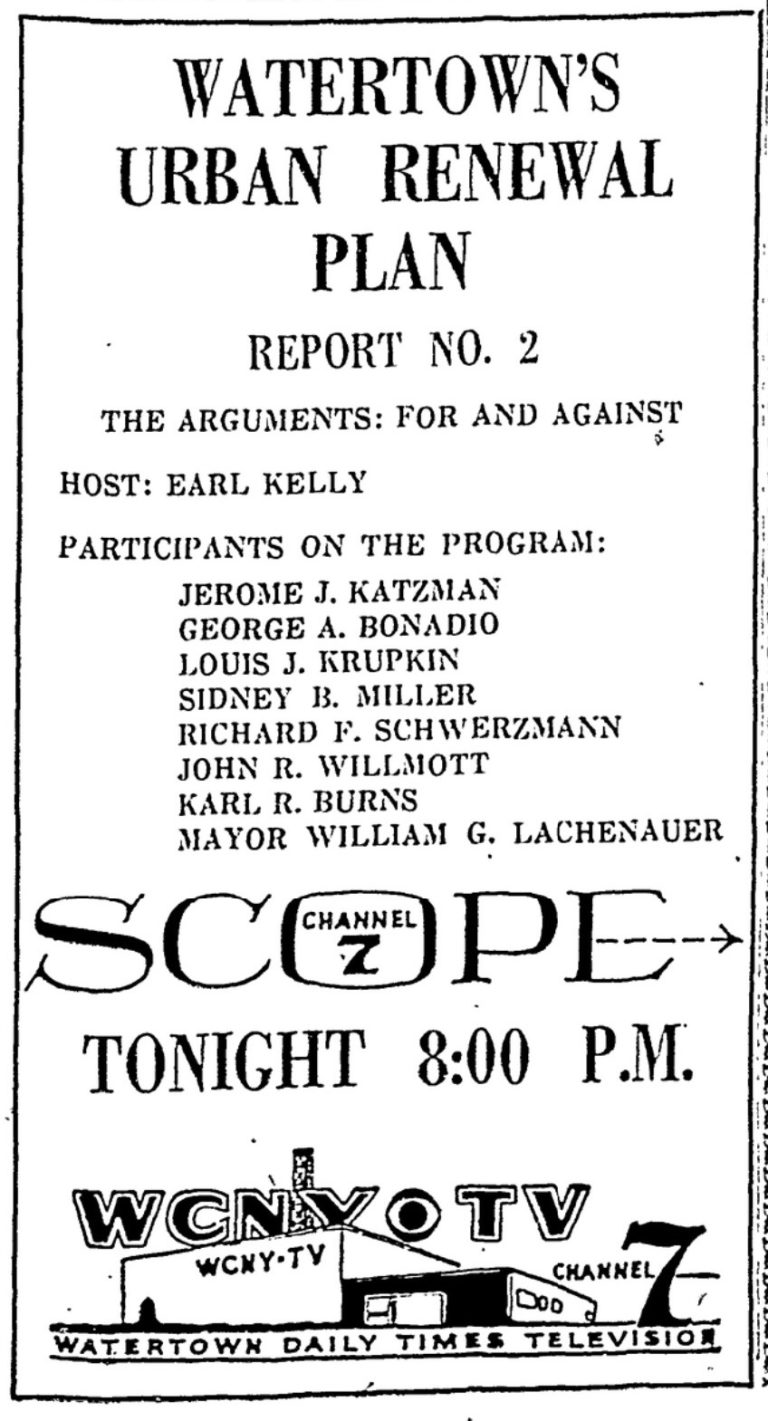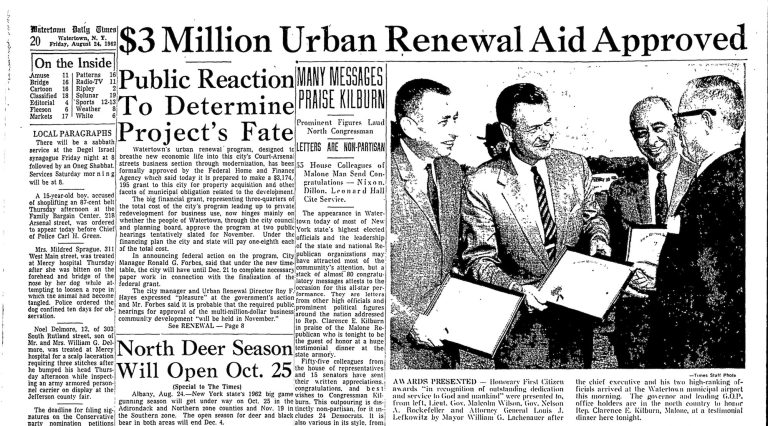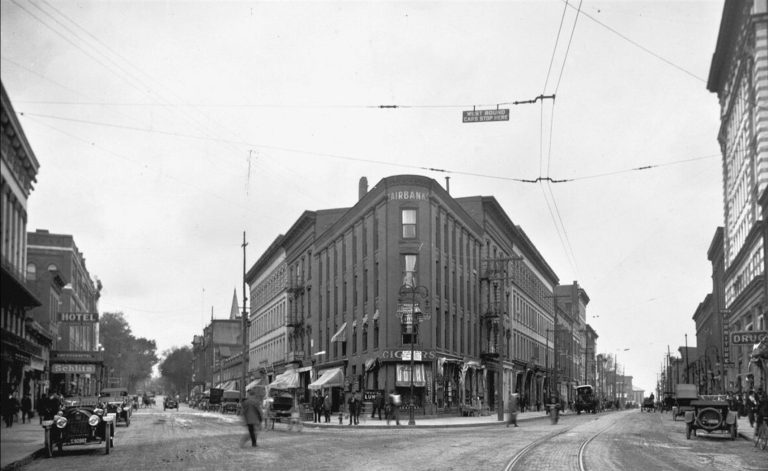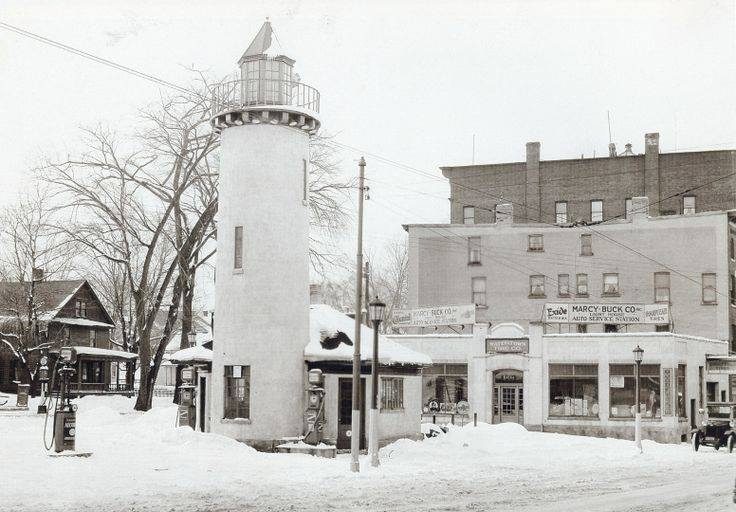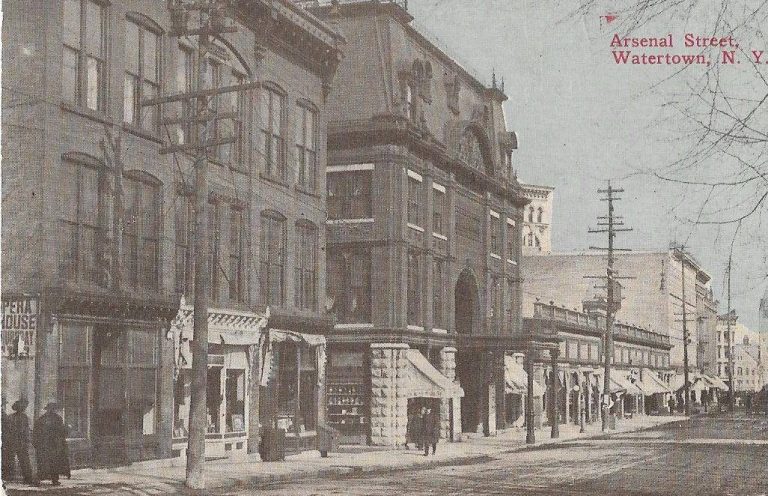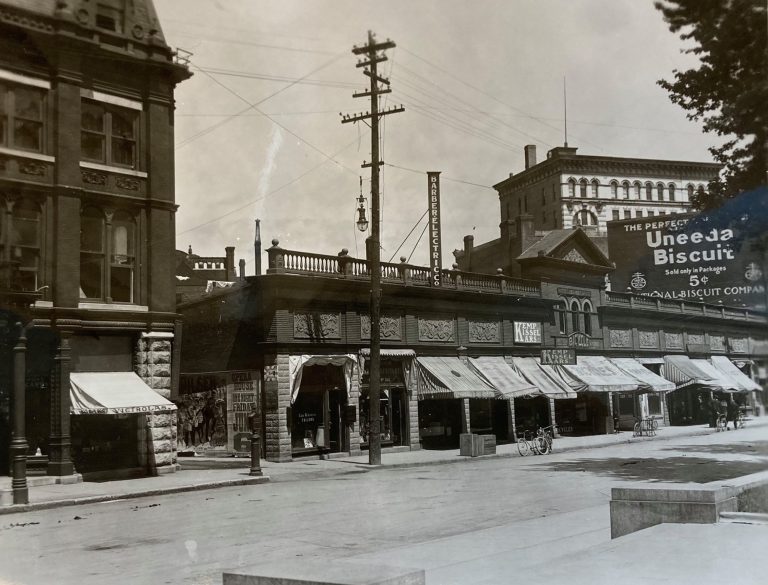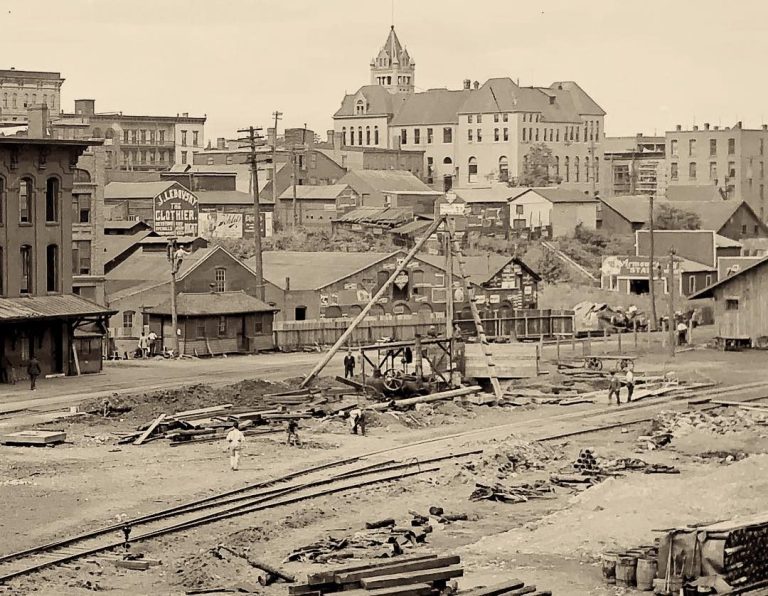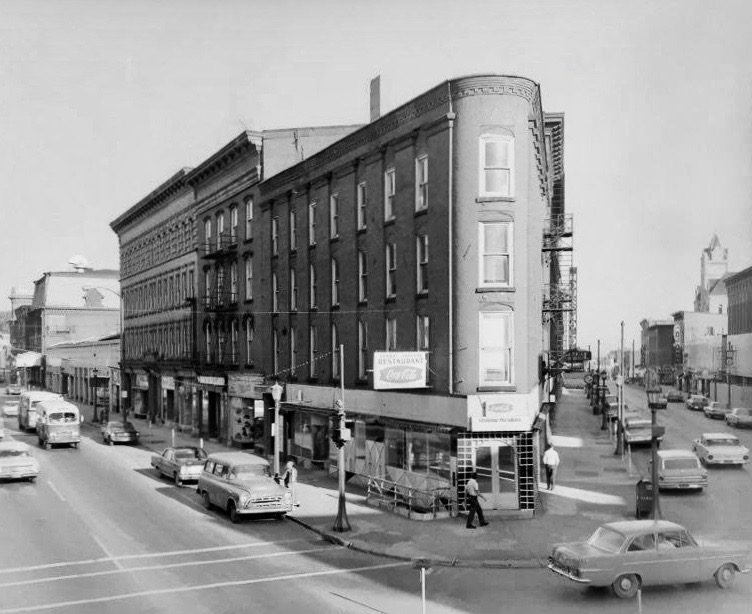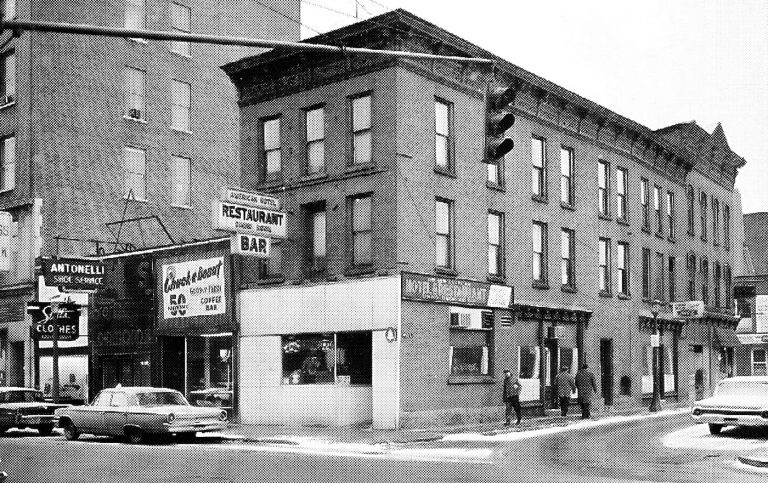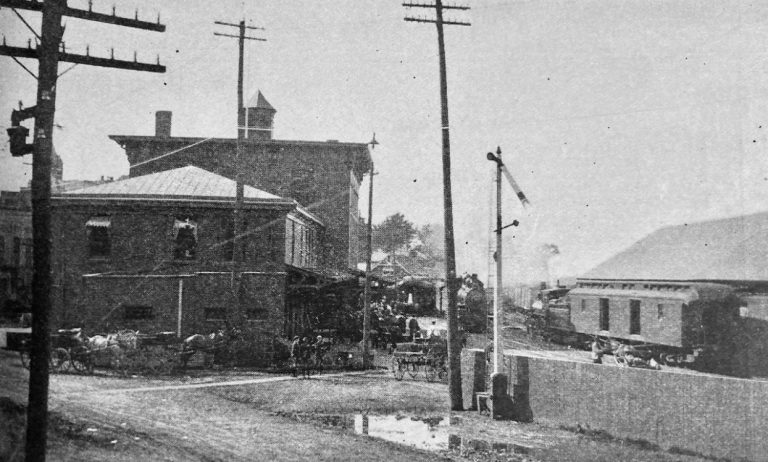The Cart Put Before The Horse? Watertown Urban Renewal Scope, Costs, Increase
When the Watertown Urban Renewal effort turned the calendar to 1961, the city’s population was between 33,000 and 34,000, trending downward for the first time in the city’s history, dating back to its incorporation in 1869. By the end of 1962, Mayor William G. Lachenauer found himself on the defensive with a number of merchants trying to eke out an existence that, if urban renewal were to come to fruition, would be the end of their businesses. By then, the plan for urban renewal had increased in scope, costs, and risks, spawning a seemingly small yet vocal and ever-growing opposition.
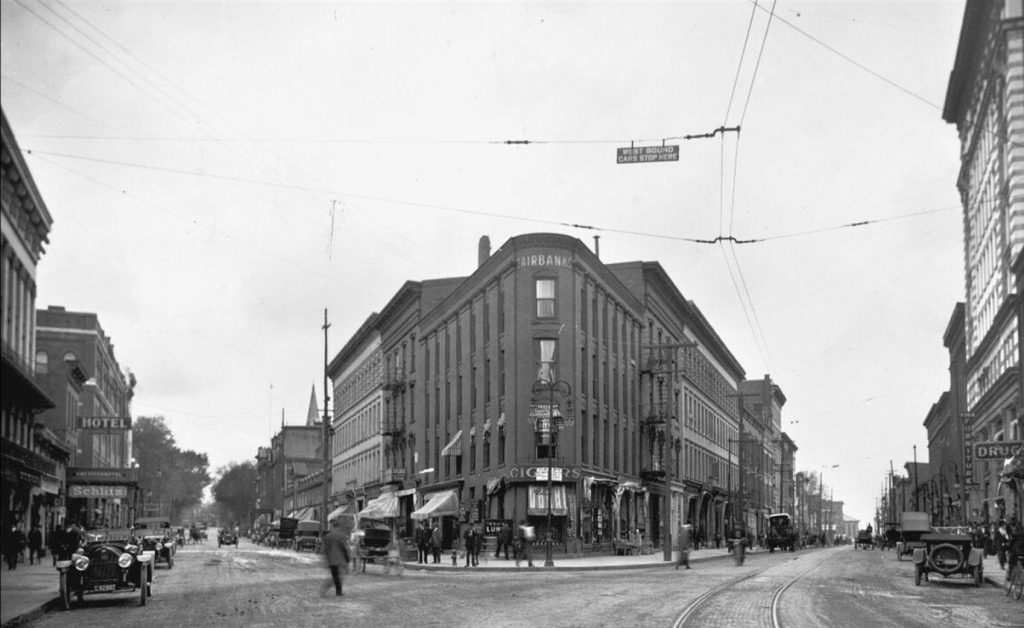
If you need to catch up with the events of the Watertown Urban Renewal project, you can check out Part 1 here. At the end of 1959, Alvie M. Edwards, the chairman of the planning committee, expected costs to be between $3,000,000 – $4,000,000 and that “all dislocated people and business in the area would be relocated under the urban renewal program with suitable payments for condemned properties and relocation costs involved.”
Flash forward to 1961, when Mr. Edwards and other senior planning commission members presented the Urban Renewal Program to the local Kiwanis Club at Hotel Woodruff. According to the Watertown Daily Times, Edwards stated at the January 5 meeting–
In order to make the program successful, it is necessary for citizens to show that they want it. The senior members of the city planning commission explained that unless the citizens of Watertown show they are behind the plan, there is little chance that the federal or state governments will exhibit an interest.
There are a few cities the size of Watertown that do not have or have not had a Urban Renewal program, Mr. Edwards said.

It was also noted too many cities wanted such a program and were seeking aid and that the process should start immediately, otherwise risk funds being held up while they try to decide “whether we want to better ourselves.” The Times further reported of the meeting–
Mr. Edwards briefly discussed the Court Street project, saying there are some who believe the entire area to be developed would be used for parking. He said such was the case. Mr. Edwards said the area, after being cleared, could be used for a number of worthwhile purposes that would all tend to aid the merchants in the downtown business area.
In March of 1961, aside from Urban Renewal development, the city was also looking at the potential construction of a new, multi-million dollar federal building on the New York Central Terminal property; taking over the current federal building on Arsenal Street and converting it into a new city hall; and potentially relocating the current post office, though it was believed its operations would relocate to the new federal site at the New York Central terminal. This plan, however, would derail city officials’ plan of converting the terminal space into public parking.
That same month, President Kennedy sent to congress a $3.25 billion “save-the-cities” housing program to reinforce cities in their “desperate struggle against blight and decay.” A test program of 40-year mortgages, with no down payment, for low-cost dwellings would be administered under the federal housing administration loan insurance program. $2.5 billion would provide funding for urban renewal grants and loans over a four-year period, hastening the slum clearance and redevelopment under the original $2 billion authorization, which was then nearly fully committed.
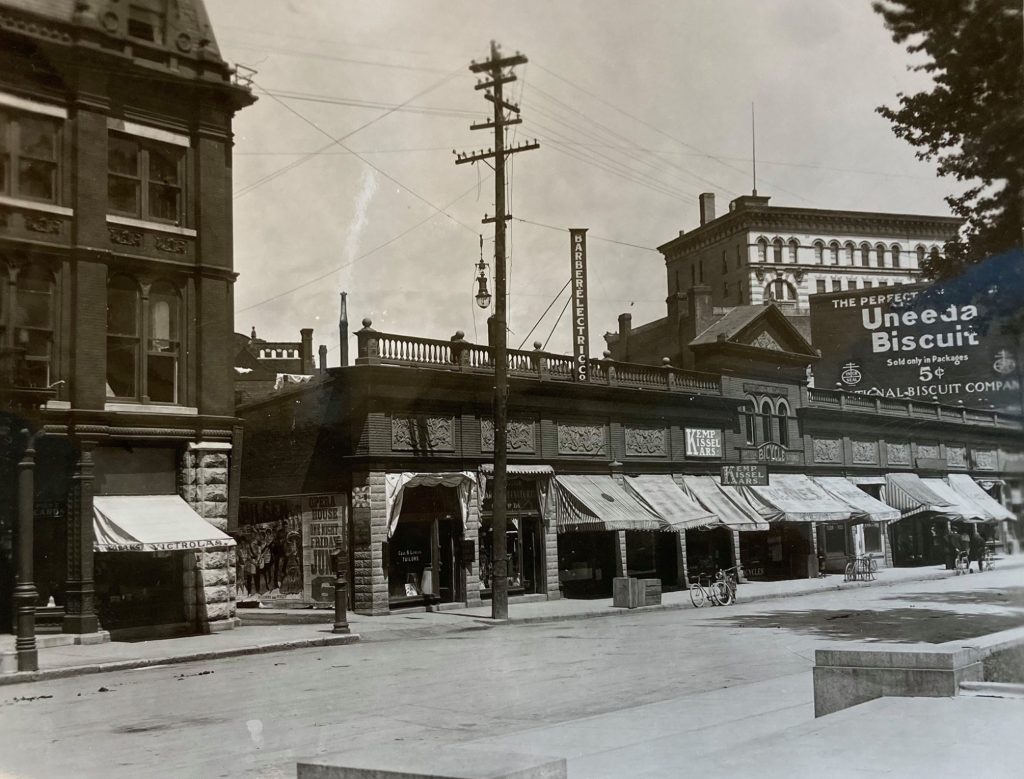
On April 22, the Watertown Daily Times published an open letter detailing over 20 objectives for a better Watertown. At number 20 was urban renewal, which contained the following—
Watertown’s downtown retail and commercial center has for many years been recognized as one of the most productive, financial and employed areas in the nation. Internal auto traffic, lack of strategically located off-street parking facilities and deteriorated properties is gradually decreasing retail sales, commercial transactions, services, employment and property value in the downtown area. The organization will continue to cooperate and assist all governmental agencies involved in carrying out Watertown’s Urban Renewal Program so that the re-vitalization of the downtown business district will be hastened.
Near the end of May, the city council unanimously passed a resolution hoping to speed up the city’s proposed urban renewal Court-Arsenal Street project by allowing the city to negotiate with contractors rather than receiving bids for construction work.
July of 1961 saw the proposal to extend the Watertown Urban Renewal project’s scope, The Times writing—
Private and public properties valued at more than $500,000 would be included in Watertown’s multi-million-dollar Court-Arsenal Street urban renewal development program under proposals for extending the plan’s scope advanced by federal regional office representatives.
City Manager Ronald G. Forbes has suggested that the city council, at its regular weekly meeting at city hall Tuesday morning, approve the inclusion of the additional parcels in the development program:
Crowner Hotel, 316-330 Court Street, assessed for $44,800.
The gas station at the junction of Court-Coffeen streets, assessed for $3,850.
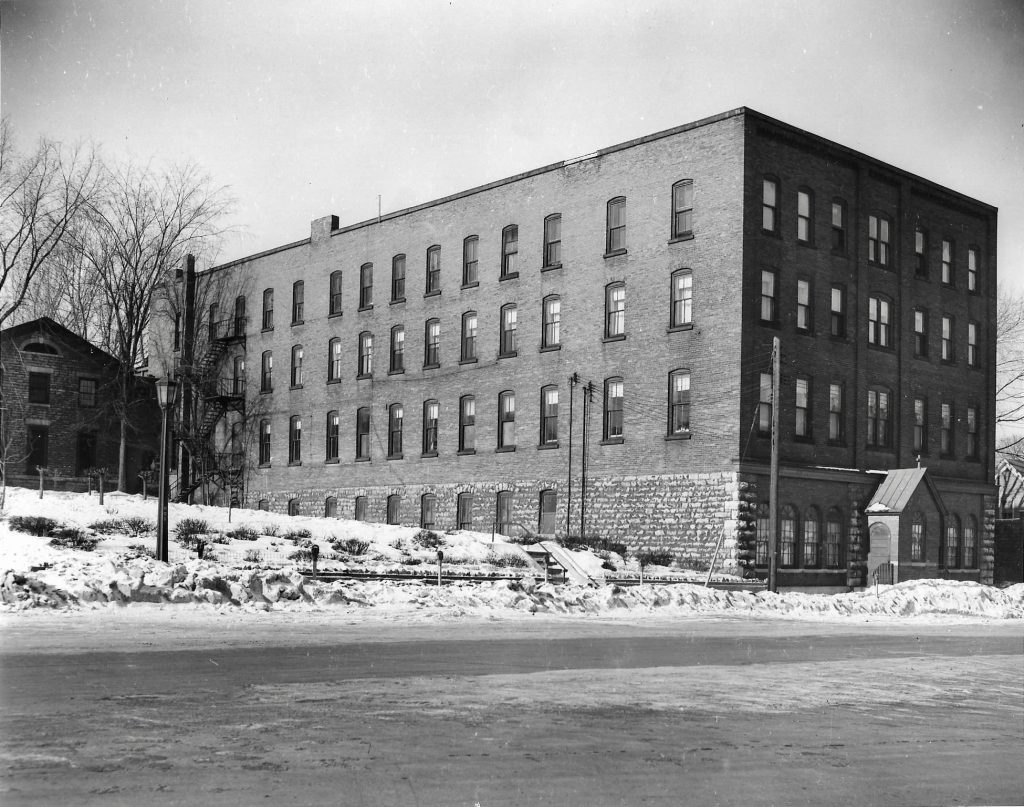
St. Patrick’s orphanage, Coffeen Street, assessed at $80,000, though tax-extempt.
Family Bargain Center, Arsenal Street, assessed for $121,550
Avon Theater, Arsenal Street, assessed for $69,850.
J. E. Powers Furniture and Appliance store, Arsenal Street, assessed for $88,250
City Hall Court Street, assessed for $80,000, though tax-exempt.
Portion of city hall off-street parking lot to the rear of Court Street, recently acquired from the New York Central and previously leased.
The city council approved the additions during a meeting in July, along with support for crafting a letter to all the businesses affected by the proposed urban renewal plan, informing them of the program’s various facets. A new federal act signed by President Kennedy potentially lowered the city’s share to one-eighth of the total if it were to qualify.
At the end of July, the total cost estimate of the Court-Arsenal Street project was published: $4,000,000. Of that, the city was seeking to reserve $294,690 in aid, the amount representing one-sixth of the cost, with the $1.748 million balance coming from the federal government for demolition, street construction, and utilities. At the same time, the other $2,000,000 was the estimated cost for new construction for commercial lease.

The city council then would need to approve the filing of the application, with a resolution including the following, printed in the Watertown Daily Times, July 28, 1961—
1.) The conditions of the area are impairing and arresting the sound growth and development of the municipality and are inimical to the public health, safety, morals and welfare of the inhabitants thereof and of the state.
2.) The municipality is undertaking an urban renewal project in said area, hereinafter called the project, under the pursuant to the Housing Act of 1949 as amended and supplemented.
3.) The renewal of the area is essential to the sound growth and development of the municipality and to the welfare of the inhabitants thereof.
4.) The financial assistance provided by the laws of the state for the purpose of carrying out an urban renewal project is necessary and in the public interest.
5.) The municipality hereby expresses its responsibilities, without, however, incurring and legal obligation, to do whatever is necessary or appropriate to carry out the project.
6.) The municipality represents that its incurring of indebtedness for urban renewal is within its debt incurring power.
With the project moving forward, by mid-August, the commission planned to begin the property acquisition process as soon as the 1961-62 winter season, with construction starting during the ’62 building season, pending final approval of the plans by sometime in October.
In mid-December, the city council authorized Mayor William G. Lachenauer to spend up to $240,000 to either purchase or condemn New York Central’s terminal property to be turned into a parking lot.
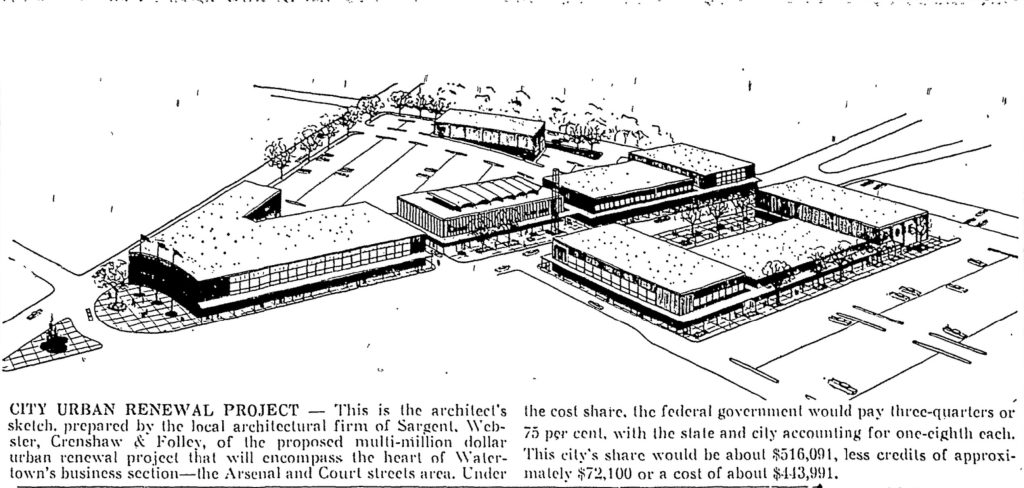
1962 began with the news on January 11th that the city council’s public hearing on the Watertown Urban Renewal project, initially scheduled for the following month, may be delayed until late spring/early summer due to changes needed to the city’s projected land use regulations. A preliminary copy was provided by consultants only the night before, and it was expected that revisions and reviews would take some time, with an additional two to three months once received by officials in New York.
Two months later, the costs all around had increased as the city council was looking to make a formal application to the federal. The Times reported on March 2—
Watertown’s multi-million dollar urban renewal program will be launched into its execution stage Monday night when the city council acts to make formal application to the federal government for approval of $2,926,587 cash grant as its share of the gross $4,833,669 Court-Arsenal Streets development.
It is estimated that the maximum cost of the project to Watertown taxpayers would be $482,414, and, with credits, likely will be substantially less (around $300K.)
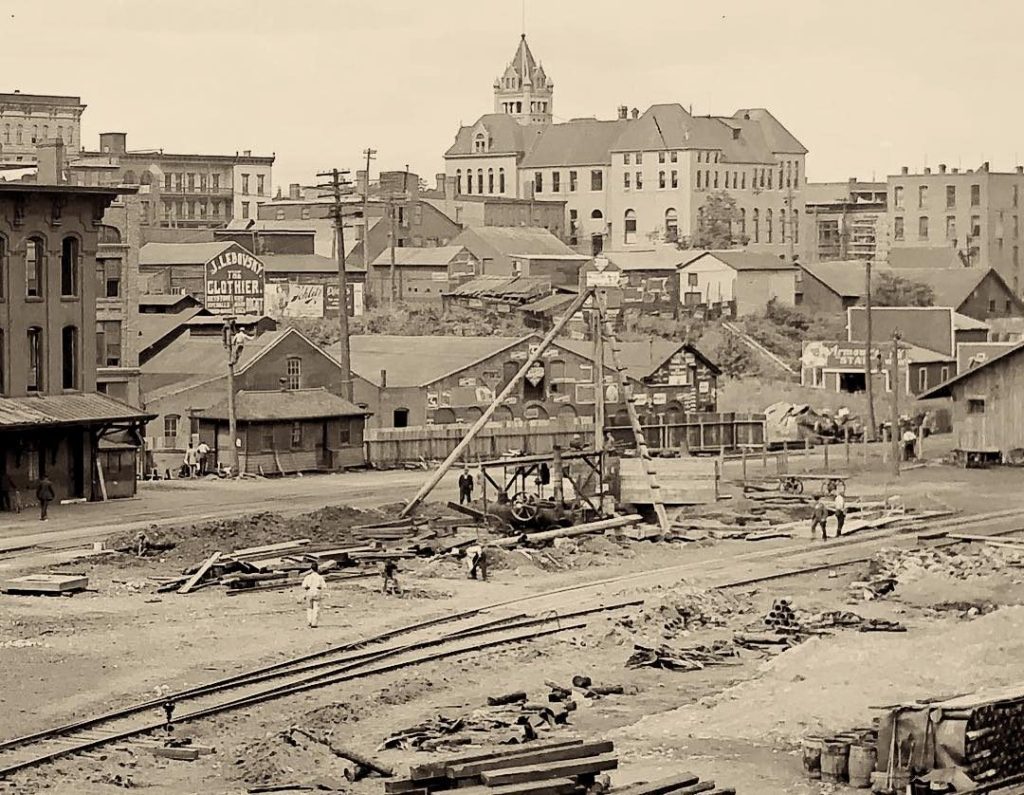
The costs stated in the article for new construction rose from an estimated $2,000,000 to $3,000,000. In a seemingly backward move, public hearings would be approved only after Watertown received its approval from the federal government. The city council would then act to vote for or against the program, with the earliest construction starting forecasted for spring of ’63.
This was likened to putting the cart before the horse, as the issues will be brought up later, but also noted in the project’s “crowning achievement,” the new Woolworth store and City Center Plaza that was on the precipice of failure had Woolworth not made the decision to relocate from its original location.
On March 21, the Watertown Daily Times published the plan as it stood currently—
The city, using its own money, would spend $1,350,000 in the first year of a two-year program to acquire the land in an obtuse V-shape area on Court and Arsenal Streets from the Flatiron building up to the imaginary line even with Sherman Street.
This area would be leveled and Sherman Street extended to connect with what is now the city parking lot behind city hall.Eight modern commercial buildings will be constructed on the site; the streets will be widened and traffic made to run directions for easiest access and exit from the redeveloped area; and the city lot behind city hall would be enlarged and another parking lot constructed at the Arsenal-Sherman streets corner of the development, making a total parking area for 700 cars.
The city will have to make considerable expenditures at first, but most of this money will be paid back to Watertown by federal and state governments as the urban renewal project progresses.
Mr. Forbes pointed out that for necessary reasons, much of the information concerning the project is presently classified, and cannot be divulged to the citizens committee until contracts are completed.

Meanwhile, Roy F. Hayes, urban renewal director, told the Rotary Club at Hotel Woodruff that the program was a “must” to maintain the downtown shopping area. As The Times reported—
Mr. Hayes said he was anxious to see local business people and others of Watertown develop the area, so they could reap the benefits. The speaker asserted that local people must get behind the plan as it may be one of the last opportunities Watertown has to keep its downtown shopping area.
The stage was being set for the final showdown in early May when Mr. Hayes claimed “criticism has turned to favorable comment.” Pending the city council’s approval, the execution stage would start around Nov. 1. The program’s land acquisition would then run from Nov. 1, 1962, through Nov. 1, 1963, followed by relocation Nov. 1, 1962, to Nov. 1, 1963. Land disposition and improvements would then commence Jan. 1, 1963, through Nov. 1, 1965.
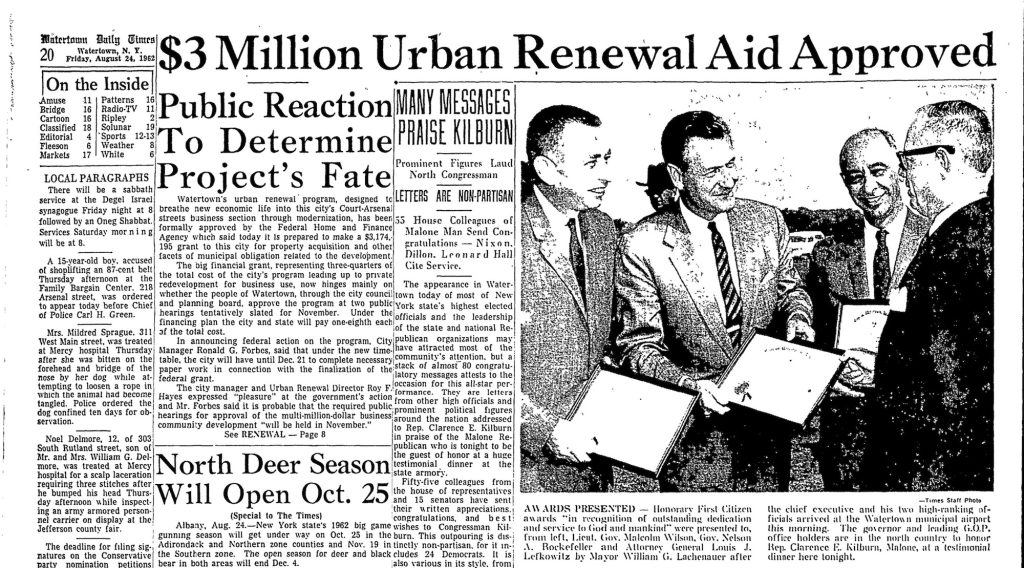
Although later than expected, the urban renewal plan for Watertown was approved by the state the last week of July and sent off to Washington, where it was expected to take another few weeks or so to be approved, setting up a showdown with the public who, at least some, had already bemoaned the costs of a potential new city hall, community college, parking lots and its share of urban renewal potentially topping several million dollars.
Suggestions made by the federal urban renewal commission were to be completed and returned by December 21, keeping the project from moving forward until January 1963 at the earliest.
In early October, invitations for the Watertown Urban Renewal development were sent out to 150 individuals of concern. This was after business leaders were contacted to discuss the program and their concerns.
The public hearing, the first of two required by federal and state officials, was scheduled for Nov. 9 at city hall, the second held by the city council sometime in December. It was suggested that people planning to attend either session submit their questions in advance.
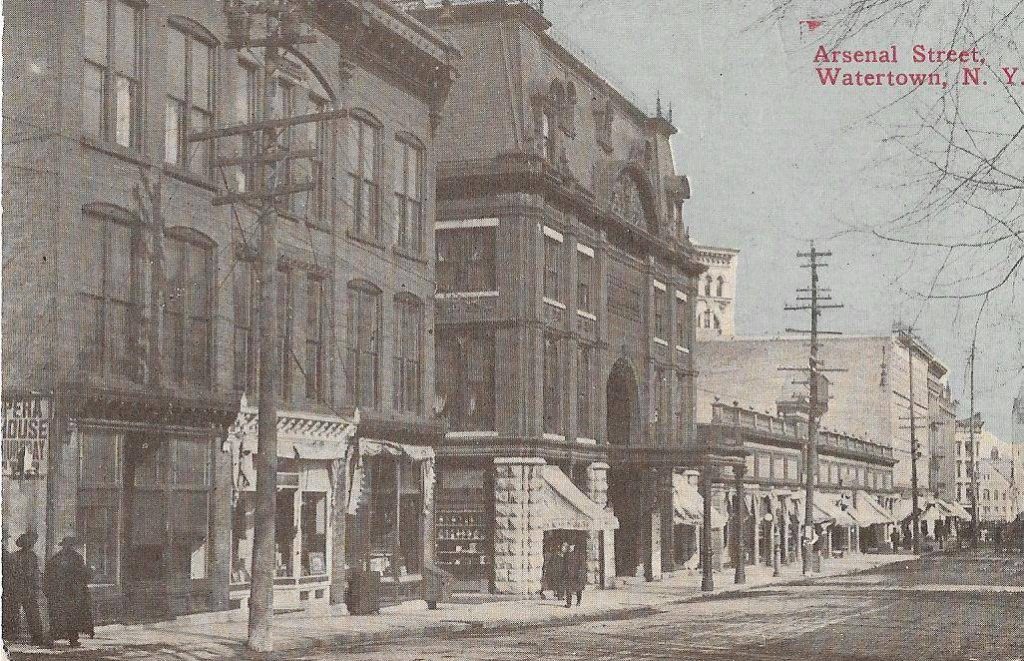
The Times reported on the event—
The hearing, held by the city’s planning board, attracted an overflow crowd to the city hall council chamber between 4 and 6 p.m. Friday.
No one in the room voiced specific opposition to the proposed development to provide downtown Watertown with an ultra-modern shopping center with an adequate off-street parking facilities.
There were suggestions of caution in proceeding, however, and a number of proposals about how the city should advance the program.
Only a single flareup marred the hearing. It occurred when Clinton W. Marsh, chairman of the planning board, who presided, took sharp issue with Sidney Miller, Arsenal Street shoe merchant, who was arguing that Watertown’s first need is more industry to create new jobs.
Mr. Marsh said he was “getting fed up” with the constant carping of people who, he charged, do not lift a finger to help out.
He apologized for his outburst, however, and a few minutes later the two-hour-long hearing was adjourned.
During the hearing a number of inquiries could not be answered by the planning board or the urban renewal office.
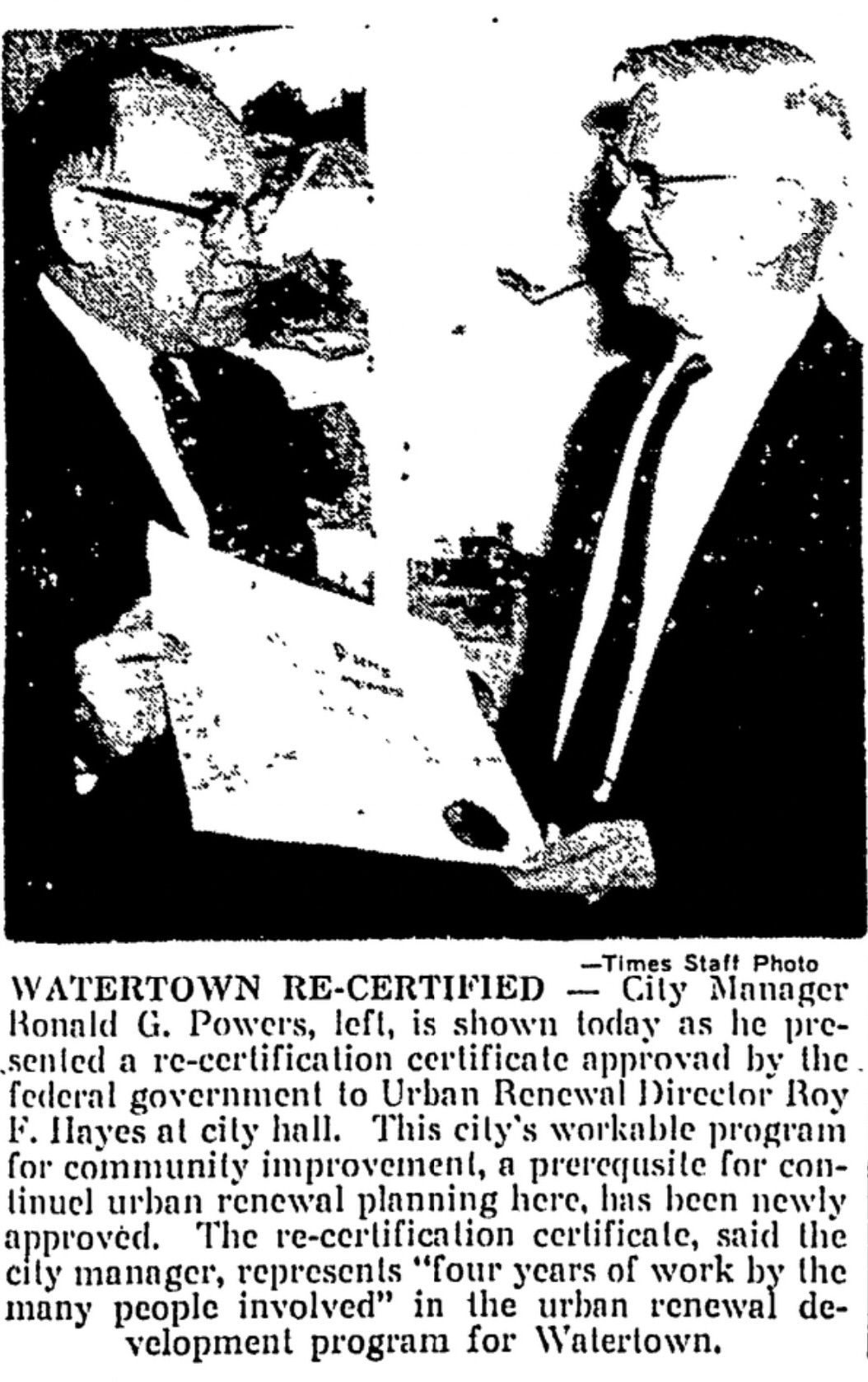
It was the first time the public could hear the plan to demolish all the buildings in the area, except for the Globe Store. Also, the Mobile gas station at the corner of Arsenal and Sherman would be razed, and no other station would be allowed in the urban renewal zone.
Opposing the program was local attorney Richard F. Schwerzmann who stated, “the trouble in this situation is that there are not enough facts available upon which to base a decision.” Mr. Schwerzmann questioned several studies and the accuracy of predictions and insisted the city have contracts for redevelopment “before starting to buy land and demolish buildings.”
There was also the questioning of the right of the city to take the property for public improvement because they were, in turn, not using it as such with plans to sell it to private developers. “This is unfair,” business owner Ira Kline insisted.
Another Court Street business owner, Gerald J. Pickleman, was in favor of urban renewal, stating Watertown was not an industrial city but a shopping city and caters to tourists as he spoke to The Times—
He said that because of the “horrible condition” of Court Street buildings, “people are being deterred from shopping here and go to places like Syracuse,” ultimately acknowledging the automobile’s popularity started to change how Court Street was once the hub for all trade in the city up until 15 years prior.
The only positive outcome for those against the project moving forward was its delay for yet another month because the municipal planning boards delayed action after the first hearing. Initially scheduled for Dec. 10, the next meeting could not be held until January 7, 1963, at the earliest.
According to Mayor Lachenauer, one of the factors for urban renewal was the eroding value of Watertown’s commercial properties dating back to 1950. In 1952, the Arsenal Street side of the Bradley Block owners paid city taxes at a rate of 23.66%. In 1962, the rate was only 14.8%, whereas Lachenauer stated in the Watertown Daily Times that some homeowners were paying “a staggering 59% of the municipal tax burden.” It was the mayor’s contention as to why many people were leaving the city for the suburbs. As for the tenants of some of these buildings on the urban renewal list, many were fighting the program to stay in business.

When the mayor met with some thirty or so of these merchants, The Times reported—
The mayor, long in the forefront of urban renewal advocates, told the merchants, that “many absentee property owners in the area don’t give a damn about Watertown and get from the merchants all the traffic will bear, giving nothing in return.”
The merchants responded that nobody had discussed the issue with them in three years and that they “did not need this kind of help if it means having to close our doors.”
In late November, a new taxpayer’s organization, largely made up of those against the urban renewal project, formed, drawing 35 individuals to its first meeting. Its committee was made up of well-known and prominent individuals, including Dr. Nicholas Gimigliano; Karl Burns, manager of Herrick’s Drug Store in the Paddock Arcade and future mayor; attorney Charles C. Johnson and Sidney H. Slater, merchant. The organization’s primary goal was fighting urban renewal but also keeping an eye on fiscal matters.
By mid-December, petitions against urban renewal were flooding city hall from anonymous sponsors asking residents to join them in submitting their names against raising taxes. Mayor Lachenauer said that the claims on the petitions were “filled with inaccuracies,” according to The Times. One statement, in particular, claimed there would be four other urban renewals if the first weren’t stopped.
Nevertheless, opposition to the program was now making itself known before the second hearing, and the case would be made for and against on local television beforehand. “Scope,” on WCNY-TV, Channel 7, would broadcast an hour-long discussion on the first Wednesday of the new year involving Mayor Lachenauer and Attorney Richard F. Schwerzmann.
At the same time, the Jefferson County junior chamber of commerce scheduled a public forum to be held at Watertown High School’s auditorium. Television sets were planned to be placed in the auditorium for those interested in watching the discussion, with the forum held directly afterward at 8:30 p.m.

